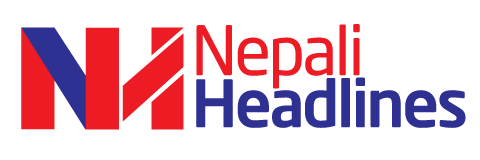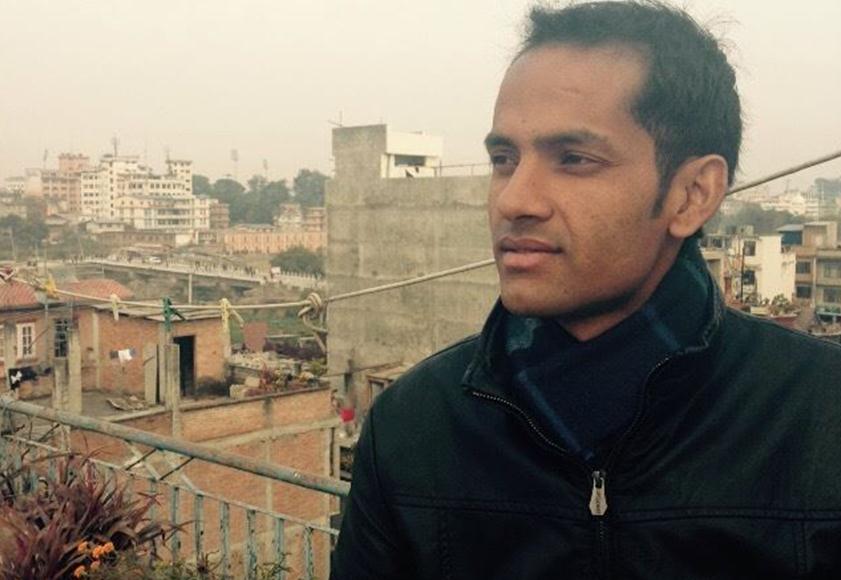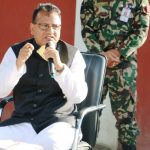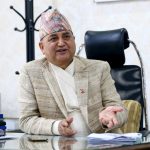Bikash Adhikari
Nepal is highly vulnerable to various types of disaster like earthquake, floods, landslides, fire, epidemics and effect of climate change. According to the disaster Vulnerability and Risk Assessment Study Report (UNDP/BCP 2004), Nepal ranks 11th in the world form earthquake vulnerability standpoint. Likewise, the country is placed in 30th place from floods aspect. In another similar report (World Bank 2005) Nepal is classified as one of the frequently Natural disaster reoccurrence country. So it is important to analyze policy, legal provisions and institutional structures Nepal has adopted in relation to Disaster Risk Management. Institutional journey on Disaster management in Nepal began with promulgation of Natural Calamities (Relief) Act, 1982 which mainly focus on arrangement of relief operations and protection of lives and properties and the Ministry of Home Affairs (MoHA) is designated as the lead agency responsible for implementation of the Natural Calamity (Relief) Act, 1982. Whereas Central Natural Disaster Rescue Committee (CNDRC), chaired by the Home Minister, is accountable for preparing and ensuring implementation of national policies. Apart from those MoHA’s Disaster Management Section and National Emergency Operation Centre (NEOC) are under the Planning and Special Services Division. MoHA is also responsible for rescue and relief works, data collection and dissemination of funds and resources.
 But if we look at various Government agencies they are assigned with different aspects of Disaster Risk Management. Along with government effort there is increasing involvement of the academicians, researchers, UN agencies, INGOs, local bodies and civil Society in disaster response but nothing significant could be done in terms of huge devastating earthquake of April 25, 2015. The present Institutional arrangement of Disaster Risk Management in Nepal is as below which was prepared before 33 years.
But if we look at various Government agencies they are assigned with different aspects of Disaster Risk Management. Along with government effort there is increasing involvement of the academicians, researchers, UN agencies, INGOs, local bodies and civil Society in disaster response but nothing significant could be done in terms of huge devastating earthquake of April 25, 2015. The present Institutional arrangement of Disaster Risk Management in Nepal is as below which was prepared before 33 years.
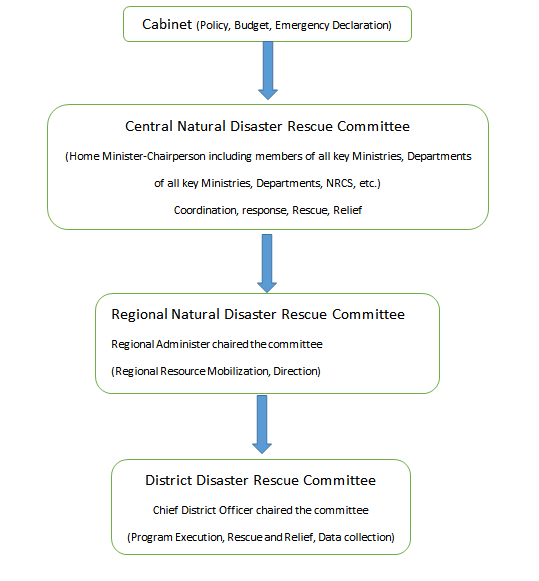
The history of Disaster Management Programs, started from 1982 and it was first included in the 10th national plan (2002-2007) of the government of Nepal. Chapter 17 of 10th plan emphasized on the irrigation and water induced disaster control, whereas chapter 22 deals on population, environment and natural and human induced disaster management. Both chapters reiterate the priority on policy formulation, strengthening institutional mechanism, risk assessment, information collection and dissemination regarding the disaster management. Both chapters also emphasized on the low costs disaster resilience construction practices.
Three Year Interim Plan (Major Policy), (2007-2010) recognizes disasters as one of the major impediments of national development process, and addresses DRM tasks in chapter 26. The Plan recognizes the need to foster collaboration and coordination among key DRM players and institutions active in different sectors of the national economy.
The Local Self Governance Act (LSGA) empowers local bodies to govern themselves and recognises that local people and local bodies are the most appropriate points of entry to meet development needs at the local level. The LSGA authorizes to undertake certain functions with respect to DRR by local bodies. Some provisions have been made to establish Environment Protection Fund and Disaster Management Fund at DDCs, VDCs and Municipalities. Control of natural calamities, prevention of infectious disease and epidemics, operation and management of fire brigades, developing mitigating and preventive measures against landslide and floods are some of the assigned task that local bodies can pursue by using the legal authority granted by the LSGA.
National Strategy for Disaster Risk Management (NSDRM) 2009 has been developed on the base of Hyogo Framework for Action (HFA) 2005 and its vision was Disaster Resilience Nepal. A detailed process was adopted during the preparation of the NSDRM, 2009. Multiple occasions were organised to solicit the view of governmental, non-governmental agencies, local bodies, academic institutions, private sector, UN agencies, INGOs, and civil society organizations.
Objectives of NSDRM are integration of Disaster Risk Reduction (DRR) into sectoral development policies and planning. Development and strengthening of institutional mechanism and capacities to build resilient communities. Systematic incorporation of different approaches into Emergency Preparedness, Response and Recovery programmes.
The Principles of DRM Planning are Mainstreaming DRM into development plans, ensure life safety and social security, emphasize gender and social inclusion, adopt decentralized implementation, follow a holistic approach, prioritize staff safety and security, follow one-window policy and cluster approach, work with participation and coordination.
Sectoral Strategies for Disaster Risk Management are Agriculture and Food Security, Health, Education, Shelter, Infrastructure, Physical Planning, Livelihood Protection, Water and Sanitation, Information, Communication, Coordination and Logistics, Search and Rescue, and Damage and Needs Assessment and Forest and Soil Conservation. Those sector should work closely in terms of Disaster Risk Management.
Sectoral Policies Related To Disaster Risk Management
- National Building Act, 2007, Building Code 1994
- Local Self Government Act, 1999
- Soil and Water Conservation Act, 1982
- Environment Protection Act, 1996
- National Agriculture Policy, 2004
- National Shelter Policy, 1996
- National Urban Policy, 2006
- National Water Resource Strategy, 2002
- Water Induced Disaster Management Policy, 2006
- Health Related Policies
- Other Policies
Apart from all those to manage disaster an International Consortium (Nepal Risk Reduction Consortium) was formed in May 2009 to support the Government of Nepal to develop a long term Disaster Risk Reduction Action Plan building on the National Strategy for Disaster Risk Management (NSDRM). Members of the Consortium are the Asian Development Bank (ADB), the International Federation of the Red Cross and Red Crescent Societies (IFRC), United Nations Development Programme (UNDP), UN Office for the Coordination of Humanitarian Affairs (OCHA), UN International Strategy for Disaster Reduction (ISDR) and the World Bank. In addition, the Consortium initiated a multi-stakeholder participatory process with the Government of Nepal and civil society organizations to identify short to medium term disaster risk reduction priorities that are both urgent and viable within the current institutional and policy arrangements in the country. An achievement was Five Flagship Program endorsed on 2009 October with following flagship.
- School and Hospital Safety
- Emergency Preparedness and Response Capacity
- Floods Management in the Koshi River Basin
- Integrated Community Based Disaster Risk Reduction Management
- Policy/ Institutional Support for Disaster Risk Management
Proposed Disaster Management Act
- Develop and strengthen new institutional mechanism; especially National Disaster Management Council (NDMC)
- Cover full cycle of DRM; prevention, mitigation, emergency preparedness, response and recovery program
- Decentralize disaster management at the local level
- Wider coverage of disaster types both natural and non-natural disasters
Coordination Mechanism
- Established a DRM Focal Points in Different Ministries, Departments including PM Office NPC and security sectors. Monthly meeting in MOHA.
- Established a National Platform for Disaster Risk Reduction (NPDRR)
- Established a Risk Reduction Consortium to coordinate Five Flagship Program.
- CNDRC meeting is held as and when necessary under the chairpersonship of Home Minister.
- Established National Emergency Operation Centre (NEOC) in MOHA to coordinate emergency rescue and relief during disaster.
- One window policy and UN Cluster approach has been adopted to implement DRM in a coordinated way.
- At the district level, DDRC – chaired by Chief District Officer (CDO) – is responsible for coordination and implementation of DRM.
The way forward
- To implement NSDRM 2009 in an effective , efficient and collaborative way
- To enact New Disaster Management Act in line with NSDRM 2009
- To develop a scientific and comprehensive Relief Standard
- Mainstreaming Disaster Risk Reduction (DRR) into national and local level planning, implementation, monitoring and evaluation frameworks
- Strong institutional base for effective implementation of DRM: networked, decentralized, entrepreneurial, collaborative, professional and virtual
- Strengthening prevention and preparedness: systems, mechanisms, methodologies and actions
- Scientific, educational and technological interventions
- Behavioural-change : Awareness raising
- Strengthening sub-regional, regional and international cooperation and collaboration: SDMC, ADPC, ADMC and UNISDR
It is encouraging to state that policy makers have realized that disaster risk management is a key to achieve sustainable development. First time in 10th Plan and since then DRM has been featured in national plan like Three Year Interim Plan 2007-10. After becoming signatory to HFA 2005, the government prioritized DRR in its development agenda and adopted National Strategy on Disaster Risk Management in 2009.
National Emergency Operations Centre (NEOC) facilitates effective emergency management. National Platform on DRR has been formed to make DRR effort more cooperative and collaborative between governmental and non-governmental actors. DRR Focal desk has been instrumental for effective implementation of disaster risk reduction related policies and programs in relevant ministries, departments, security agencies and local bodies.
Although the MoHA has achieved some fresh progress on policy and institutional levels and still some are in the offing, there ahead lies a well implementation and smooth functioning of policies and programmes. Adequate resources, commitment, cooperation and collaboration are always needed to bring these policies and programs into fruition. Mainstreaming DRR in sectoral development, effective implementation of building code and building act, implementation of land use and settlement planning, changing mindset of the people, development and strengthening of effective institutions on DRR are some pressing issues in disaster management of Nepal. Indigenous Knowledge and oral history should also be consider in terms of Disaster Risk Management. Although a lot was done before we could not act effectively in terms of big earthquake so we need to re think on DRM in Nepal differently looking at the practices other country are following in terms of such disaster and in accordance of Sendai Framework for Disaster Risk Reduction 2015-2030.
